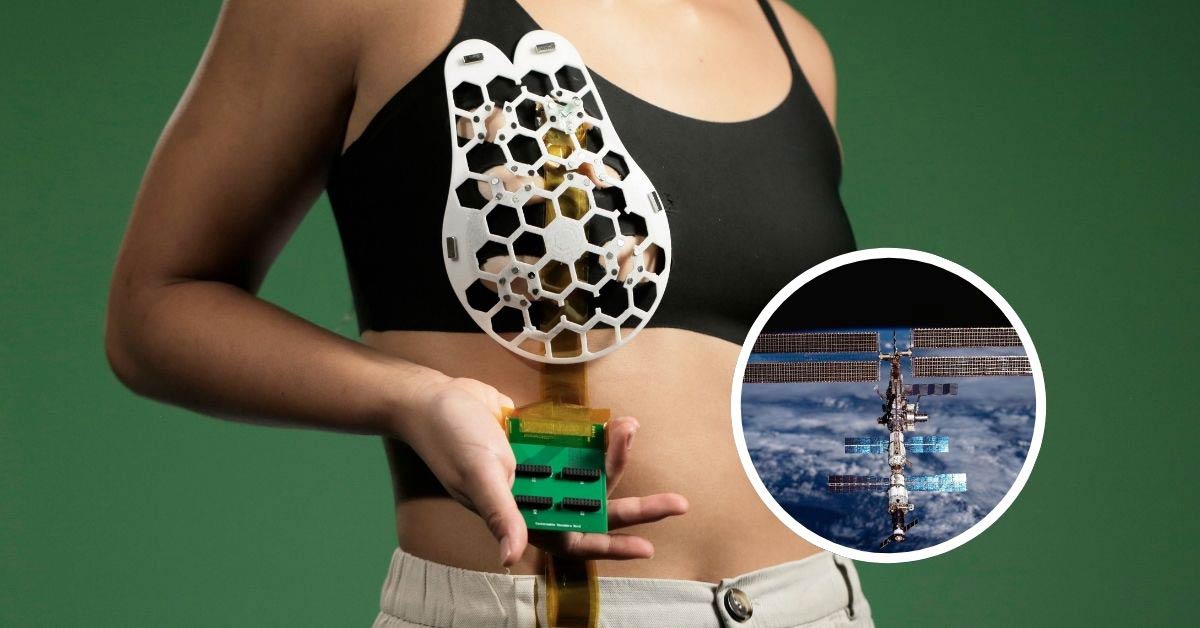In 2023, Canan Dagdeviren, who leads the Women’s Health Initiative at the MIT Media Lab, published a study on a groundbreaking invention: An ultrasound device that can be attached to a bra, designed to catch breast cancer early.
The device is a flexible patch that can be attached to the undergarment, allowing the wearer to move an ultrasound tracker along the patch and image the breast tissue from different, more dynamic angles.

In the 2023 study, Dagdeviren and her team found that they could obtain ultrasound images with resolution as clear as those used in medical imaging centers.
But unlike traditional mammograms, the device offers a safer and more frequent alternative, capturing data from the same spot consistently and even detecting anomalies as small as 0.3 centimeters.
It’s called the Ultrasound Breast Patch, or cUSBr-Patch, and it was inspired by Dagdeviren’s late aunt, Fatma Caliskanoglu. She was diagnosed with late-stage breast cancer at age 49, despite having regular cancer screenings, and passed away six months later.
During that time, Dagdeviren started sketching up her design, allowing for more frequent screening of individuals at a high risk for breast cancer.
“My goal is to target the people who are most likely to develop interval cancer,” Dagdeviren told MIT News in 2023. “With more frequent screening, our goal to increase the survival rate to up to 98%.”

Now, just a couple years later, the cUSBr-Patch has taken the next step in the research journey — or, the next big leap for womankind.
In April, the device was sent to space with a team of six women on the Blue Origin space flight.
“It’s one of three experiments I conducted in space for women’s health,” astronaut Amanda Nguyen shared on Instagram.
She explained why it’s important for research like this to be done in orbit.
“One thing space gives scientists that cannot be replicated on Earth is more time,” Nguyen said. “In microgravity, 10 years of tumor growth can occur in 10 days.”
Researchers can experiment with treatments equally as quickly.
“I teamed up with Dr. Dagdeviren at MIT, the inventor of this ultrasound, to test its hardware durability, both in high G-forces, ascent and descent, and in microgravity,” Ngueyn added.
“Ultrasounds can be bulky, but Canan’s invention makes it possible to conduct more cancer experiments in space, embed ultrasounds into spacesuits, and into bras on Earth.”

Back on earth, Nguyen is working with MIT Media Lab researchers to analyze the performance of the device’s materials, which include ultra-high molecular weight polyethylene and elastic yarns, designed for high-tensile environments. It was also tested for moisture resistance.
While it’s unclear what their findings will be, or what is next to getting this device on the market, its potential is written in the stars.
“This device has the potential to reshape our approach to imaging breast cancer, saving up to 12 million lives,” Nguyen said. “It’s an honor to be a part of advancing this research.”
You may also like: Scientists invent solar panels that provide wireless energy from space
Header images courtesy of Canan Dagdeviren and NASA



